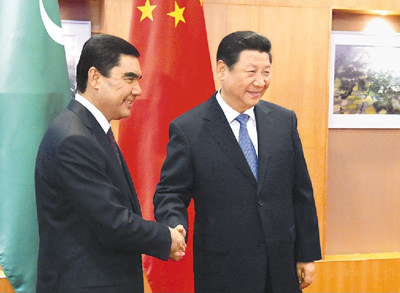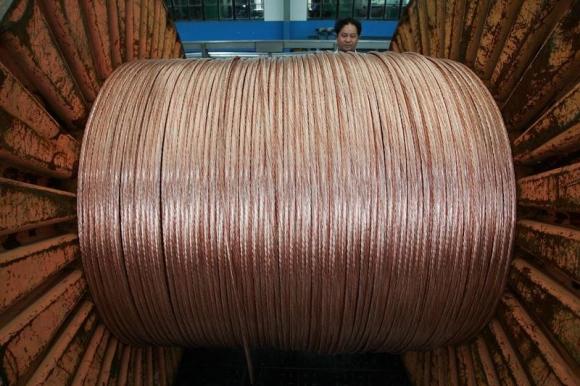Flammable ice becomes promising energy source
Source: www.chinamining.org Citation: China Daily Date: September 18, 2014
China will begin commercial production of gas hydrate - an enormous, untapped energy source in permafrost and ocean sediments - around 2030 as it tries to diversify its energy mix by tapping into unconventional sources.
Li Jinfa, deputy director of China Geological Survey, said that with consistent efforts in gas hydrate research and related policies, China will keep pace with advanced countries in turning the untapped resource into an energy solution.
China has been the largest global energy consumer since 2010, prompting authorities to increase research and exploration of unconventional energy sources such as shale gas and gas hydrate.
According to China Geological Survey, deposits of gas hydrate in China are estimated to be 110 billion metric tons in oil equivalent in permafrost and ocean sediments, while China consumed 2.6 billion tons in oil equivalent last year.
Li said he believed the energy source will gradually change China`s energy structure.
To realize commercial production, China is speeding up research and development in exploitation technology, and production testing in the South China Sea is expected to begin in 2017, Li said.
"The production testing will help improve mining technology and equipment, laying the foundation for future commercial production," Li said.
Gas hydrate, also called flammable ice, exists as ice crystals with methane gas locked inside, and is formed under high pressure and low temperatures in permafrost or under the sea. In China, it is detected in the permafrost in Qilian Mountains, Qinghai province and under the South China Sea.
When exposed to normal air pressure, the crystalline substance expands up to 164 times its volume, providing natural gas and water.
Natural gas is a relatively clean energy, releasing less than half the amount of carbon dioxide when burned that oil and coal do.
Although the resource has promising potential, no country has been able to produce it commercially due to the challenging conditions of the gas hydrate and the unpredictable environmental impact.
In March 2013, Japan became the first country to successfully extract gas from deepwater gas hydrate deposits, which makes widespread extraction of flammable ice just a matter of time. Besides Japan, the US and Canada have also invested significantly in gas hydrate research and test projects. The US launched a national research and development program in 1982 and completed its gas hydrate assessment in 1995.
South Korea and India are also looking to develop the resource. China started research on the energy source in the late 1990s with the first gas hydrate samples collected in the South China Sea in 2007.
In 2011, China successfully extracted natural gas from gas hydrate deposits about 130 to 400 meters under the surface of the permafrost in Qilian Mountains.
Although scientists in more than 30 countries and regions have researched the resource, Li admitted that the understanding of how drilling for hydrates may affect the environment is still limited.
"The sudden release of gas hydrate during improper drilling can influence the stability of seabed structures, even triggering geological disasters such as tsunamis and small earthquakes under the sea, posing severe challenges for future exploration," Li said.
Lin Boqiang, director of the China Center for Energy Economics Research at Xiamen University, said there are huge environmental risks from commercializing gas hydrate production, because the high volumes of carbon dioxide can cause explosions and add to the greenhouse effect.
About CHINA MINING
Since first held in 1999, the scope and influence of CHINA MINING has grown rapidly year by year. As a global mining summit forum and exhibition, CHINA MINING Congress and Expo has become one of the world’s top mining events, and one of the world’s largest mining exploration, development and trading platforms, covering all aspects of the whole mining industry chain, including geological survey, exploration and development, mining rights trading, mining investment and financing, smelting and processing, mining techniques and equipment, mining services, etc. playing an active promotion role in creating exchange opportunities and enhancing mutual cooperation between domestic and foreign mining enterprises.
CHINA MINING Congress and Expo 2014 will be held at Meijiang Convention and Exhibition Center in Tianjin on November 20th-23rd, 2014. We invite you to join the event and to celebrate the 16th anniversary of CHINA MINING with us. For more information about CHINA MINING 2014, please visit: m.balanzskin.com.






